Climate change back on the agenda?
Trawling the media for climate-related stories over the weekend, I began to see some signs that the message might be getting across after all. I had just put the finishing touches to my story on “Why we don’t want to hear about climate change“, based on interviews with sociologist Kari Marie Norgaard from the University of Oregon and psychologist Per Stoknes from the Norwegian Business school, when I heard US Secretary of State John Kerry’s announcement that the USA and China would be cooperating and exchanging data in the run-up to the 2015 Paris climate talks, where a new climate deal is supposed to be agreed. I found myself feeling just a little bit more optimistic. If these two key players really put climate protection into action, maybe we will be able to get somewhere. A report on a study by the Chinese government on the disastrous air pollution in Beijing is not happy reading, but gives grounds to assume the Chinese government has to be serious about taking emissions in hand.
Arctic ambassador – a sign of the times?
Another announcement by the US Sec of State leaves me with mixed feelings. There is going to be a US ambassador for the Arctic. On the one hand, it is always good to see the Arctic getting attention. On the other hand, the motivation does not make me jump for joy. An item from the news agency AFP writes of “a region increasingly coveted by several countries for its oil and other raw materials”. Indeed. That is the worrying bit. In case you missed it, (the Arctic announcement did not get huge coverage), Kerry said in his statement:
“The Arctic region is the last global frontier and a region with enormous and growing geostrategic, economic, climate, environment and national security implications for the United States and the world…President Obama and I are committed to elevating our attention and effort to keep up with the opportunities and consequences presented by the Arctic’s rapid transformation – a very rare convergence of almost every national priority in the most rapidly-changing region on the face of the Earth”. It is good to see climate and environment get a mention at least.
A “Stern” warning
The Guardian had a guest article by Nicholas Stern, the author of that famous Stern Report on the economics of climate change back in 2006 (yes, it really is that long ago).The background to this, of course, is the wild weather in the UK. Now I do not wish that kind of weather on anyone, but in terms of drawing attention to climate change it has certainly been very important. Stern writes “The record rainfall and storm surges that have brought flooding across the UK are a clear sign that we are already experiencing the impacts of climate change”. He makes a clear case for linking the two. He also brings in the other extreme weather around the globe, including Australia, Argentina and Brazil and the devastating typhoon Haiyan in the Philippines last year. Stern has clear advice for the politicians:
“This is a pattern of global change that it would be very unwise to ignore.” Stern says the risks are even bigger than when he wrote the 2006 report. “Since then, annual greenhaouse gas emissions have increased steeply and some of the impacts, such as the decline of Arctic sea ice, have started to happen much more quickly.”
I hope a lot of decision-makers and influential business people have read or will still read Stern’s article. He calls for rapid action and investment. He has a clear message for the European Union, currently not the most popular international organisation with the British government. “The UK whould work with the rest of the EU to create a unified and much better functioning energy market and power grid structure. ‘this would also increase energy security, lower costs and reduce emissions. What better was is there to bring Europe together?” Other measures recommended would be to implement a “strong price on greenhouse gas pollution across the economy”. This, remember, is a renowned economist, not an environmental campaigner. He also warns against the temptation to cut overseas aid to fund adaptation to climate change. “It would be deeply immoral to penalise the 1.2 billion people around the world who libve in extreme poverty…In fact, the UK should be increasing aid to poor countries to help them develop economically in a climate that is becoming more hostile largely because of past emissions by rich countries”- Yes. Yes. Yes.
Don’t let the weather distract from your climate awareness!
The other piece of writing which inspired me over the weekend was in the ImaGeo blog by Tom Yulsman: “Move over polar vortex“. He looks at the new analysis produced by the UK’s Met Office:
“If a new scientific analysis is correct, the repeated bouts of extreme weather on either side of the Atlantic are indeed unusual – and both are manifestations of a chain of climatic teleconnections that reach half way around the globe and all the way to the tropics”.
There is a lot of talk in this piece of whether the polar vortex is weak (as discussed in my article More Arctic Weather in a Warming World?) Or actually “particularly intense”. I would recommend you read Tom’s blog for yourselves for the details and his views. But the insight I would leave you with here as “food for thought” is where he quotes a paper in the journal Science.
“They conclude that the recent discourse focusing on the possible connections between winter weather and climate change distracts from the bigger issue: that is, regardless of extreme winter weather, climate change is undoubtedly real, and that harsh winters are not what we really need to be concerned about going forward as the climate continues to change”.
People love to talk about the weather. But if we use every instance of unusual weather to question the overall trend of global warming, with all the complex effects that has on our climate, winds, oceans etc, we run the risk of losing a necessary sense of urgency when it comes to reducing emissions. I am reminded, as I often am, of a young climate ambassador from the Netherlands during a fact-finding trip to Alaska in 2008. As we stood at the Visitor’s Centre for a glacier which is now no longer visible from that spot because it has retreated so far, he said that just brought home to him how “everything is connected”. Our everyday lifestyle in the industrialised world is melting the Arctic ice – and that, in turn, is contributing to the changing climate patterns which can radically alter the planet.
Climate change and the polar vortex
If you live in one of the North American areas hit by the latest big freeze, you may well have been hearing someone say “so much for global warming” over the last week or so. If you live on this side of the Atlantic, you might have been tempted to worry more about climate change if you were being battered by storms or gales. Then there are those here in Germany saying “give me more of this warming”, with the birds tweeting and the bushes blooming as if we were already in the middle of spring.
![]() read more
read more
“On Thin Ice” at Warsaw climate talks
Did you know it was the “Day of the Cryosphere” at the Warsaw climate talks COP 19 in Warsaw yesterday? If not, you might be forgiven. I haven’t seen it making the headlines in the mainstream media. That is a pity, given that what climate change is doing to our ice, snow and permafrost has repercussions for the whole planet.
![]() read more
read more
Melting permafrost eroding Siberian coasts
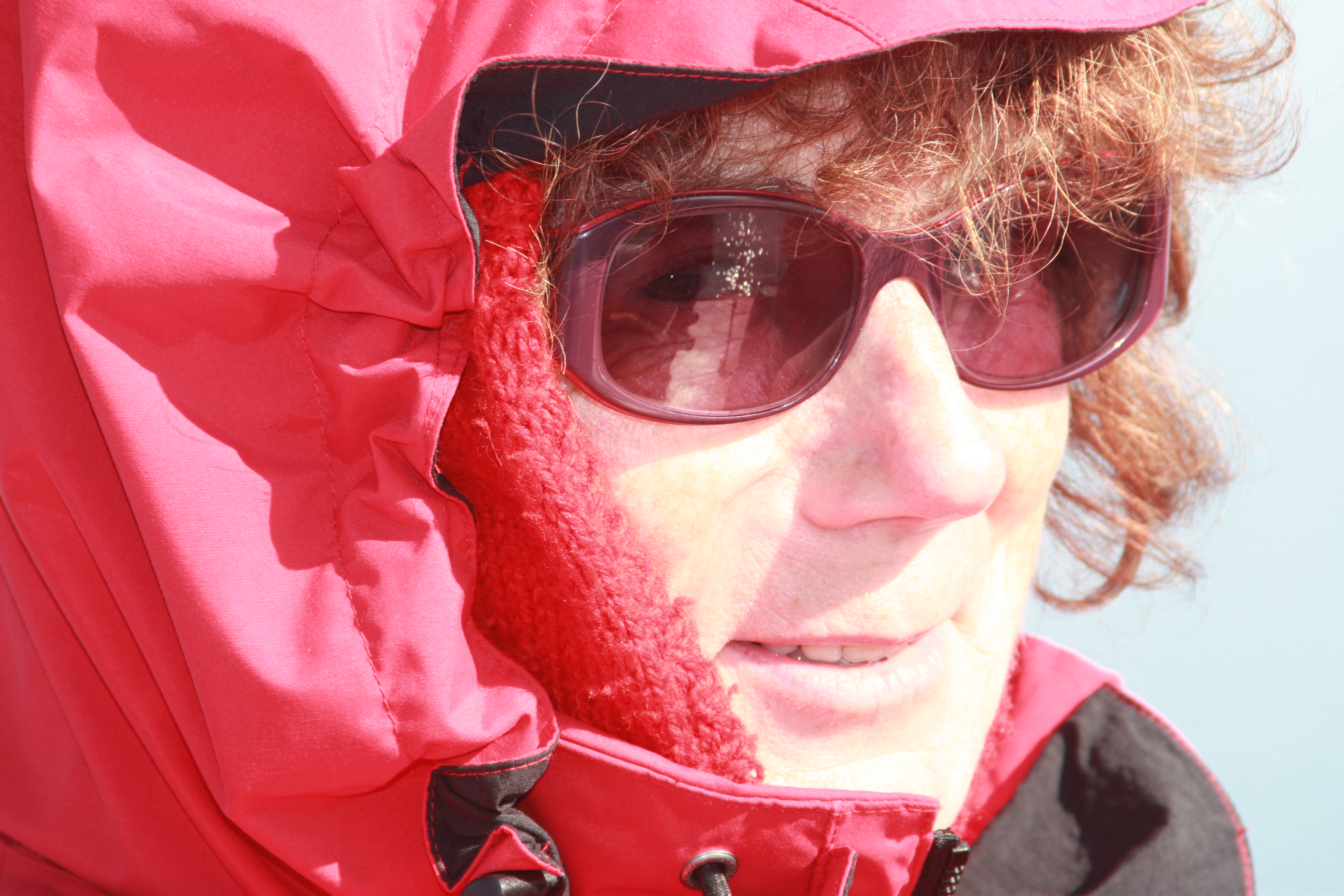 Rising summer temperatures and dwindling Arctic sea ice are eroding the cliffs of Eastern Siberia at an increasing pace. Scientists from AWI, the German Alfred Wegener Institute and the Helmholtz Centre for Polar and Marine Research have been evaluating data and aerial photographs of the coastal regions from the last 40 years. As the sea ice recedes more and more from year to year, the cliffs are being undermined by waves. At the same time, the land surface is beginning to sink.
Rising summer temperatures and dwindling Arctic sea ice are eroding the cliffs of Eastern Siberia at an increasing pace. Scientists from AWI, the German Alfred Wegener Institute and the Helmholtz Centre for Polar and Marine Research have been evaluating data and aerial photographs of the coastal regions from the last 40 years. As the sea ice recedes more and more from year to year, the cliffs are being undermined by waves. At the same time, the land surface is beginning to sink.

This graphic, courtesy of AWI, shows the interaction between permafrost melt, wave action and coastal erosion
Disappearing island
The research documents warming summers. While the temperatures during the period looked at were higher than zero degrees Celsius on an average of 110 days per year, the scientists counted a total of 127 days in the years 2010 and 2011. In 2012, the number of days with temperatures above freezing increased to 134.The number of summer days on which the sea ice in the southern Laptew Sea vanishes completely is also on the increase. “During the past two decades, there were, on average, fewer than 80 ice-free days in this region per year. During the past three years, however, we counted 96 ice-free days on average. Thus, the waves can nibble at the permafrost coasts for approximately two more weeks each year,“ says AWI permafrost researcher Paul Overduin.
Not only a problem in Siberia
Sea ice plays an important role in protecting coasts from waves. When this barrier is not there, the waves dig deep and erode land away. I saw the results of this first-hand during a trip to Barrow, Alaska, in 2008. I visited sites at Point Barrow, the northernmost point of the United States, where villages had been washed into the sea. On a trip to Greenland in 2009, I was amazed to see buildings being artificially cooled to avoid them sinking into the ground as warming temperatures melt the permafrost.
In the area of Siberia investigated by the German scientists, high cliffs protect the coastline. As the permafrost melts above and waves cut in from below, the cliffs are undermined and break off.
The erosion does not only have an impact on land. It also washes material into the sea, changing the quality of the water. Depending on the kind of erosion and the particular structure of the coast, between 88 and 800 tons of plant-, animal, and microorganism-based carbon are currently washed into the sea per year and kilometer of coastline – materials which were previously sealed in the permafrost, according to the AWI researchers. Once in the water, carbon may turn into carbon dioxide and, as a result, contribute to the acidification of the oceans.
The studies were conducted as part of the PROGRESS project which is funded by the German Federal Ministry of Education and Research. PROGRESS is the acronym for Potsdamer Forschungs- und Technologieverbund für Naturgefahren, Klimawandel und Nachhaltigkeit (Potsdam Research Cluster for Georisk Analysis, Environmental Change and Sustainability).
From Alaska to tear-gas in Istanbul
“Came for climate change training and just got tear gassed by Turkish police on walk home from dinner to hotel. SHAKEN BUT NOT STIRRED…” was the message I got from Cara Augustenborg in Istanbul at the weekend. Cara, whom I first met in Alaska when she was a “Climate Change College” ambassador, is now Ireland’s first “Climate Reality Leader”.
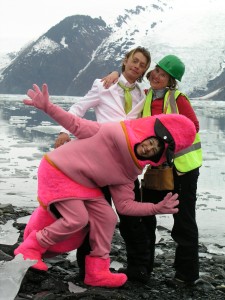
Cara, in the green hat, posing with fellow youth climate ambassadors Aart and Erika in Alaska, 2008. They were filming publicity stunts for their climate-saving projects.
She will be writing a guest blog here in the next couple of days. If you take a look at the Ice Blog banner, the lady with the beige hat in the kayak is Cara. I took the photo from the kayak behind during the trip to Alaska in 2008 when the Ice Blog was born. The expedition was to find out about the impacts of climate change on the Arctic, including a trip to the Arctic research station in Barrow, meetings with local people in the northernmost town in the USA and a visit to the receding Begich Boggs glaciers near Whittier.
I was thrilled when Cara told me recently she had been chosen a “Climate Reality Leader” and invited to a climate workshop with Al Gore in Istanbul. Expect more on that in her guest post for the Ice Blog very soon. As it turned out, she and her fellow “climate leaders” ended up bang in the middle of the pro-democracy protests.
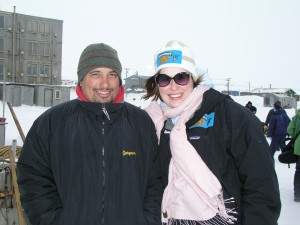
Cara and Kayan – “Give me a solar-powered snow mobile and I’ll use it” was the young Eskimo’s quip in Barrow, Alaska.
Cara is one of those committed people who live, work and think climate. She set up Ireland’s first website on “greening” your home, worked on biofuels at Dublin University and now successfully runs her own consultancy.
“Baked Alaska” – Picture gallery from the Climate Change College Expedition to Alaska



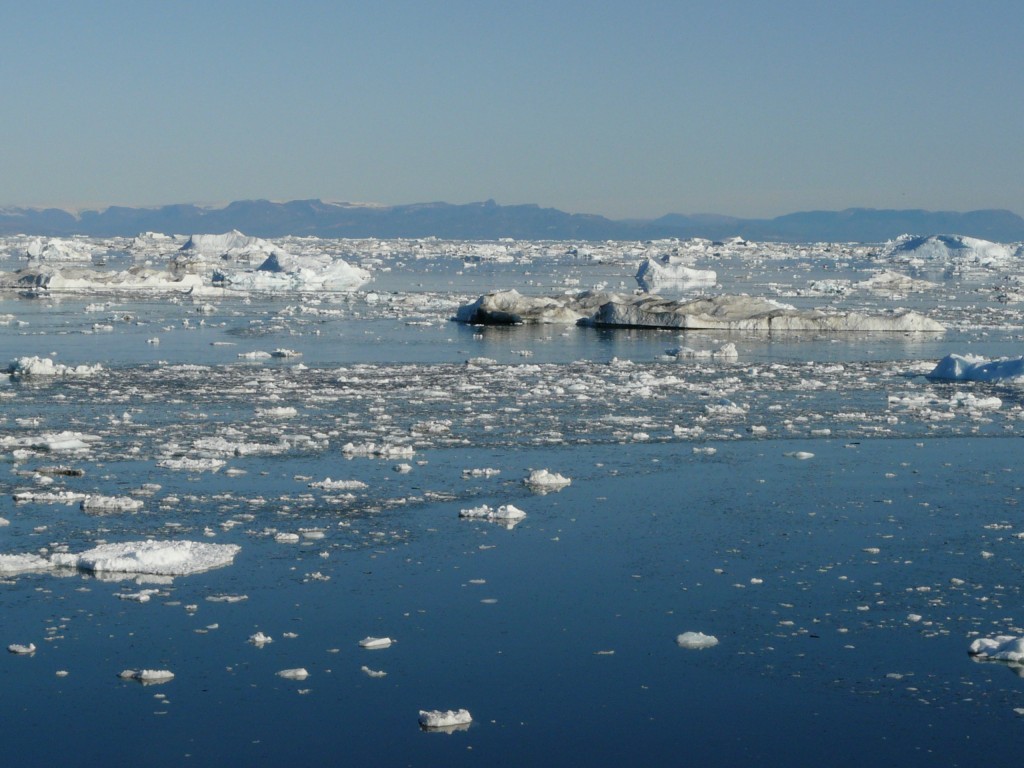
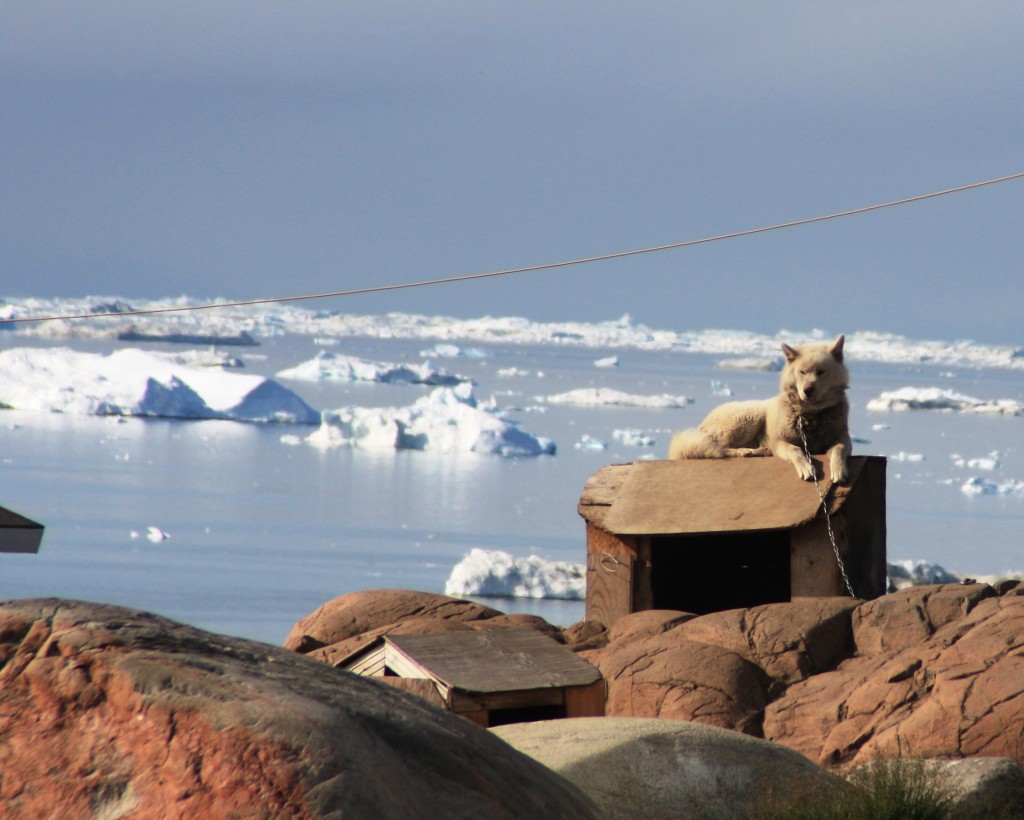
![6418.3[1]](http://blogs.dw.com/ice/files/6418.31.jpg)


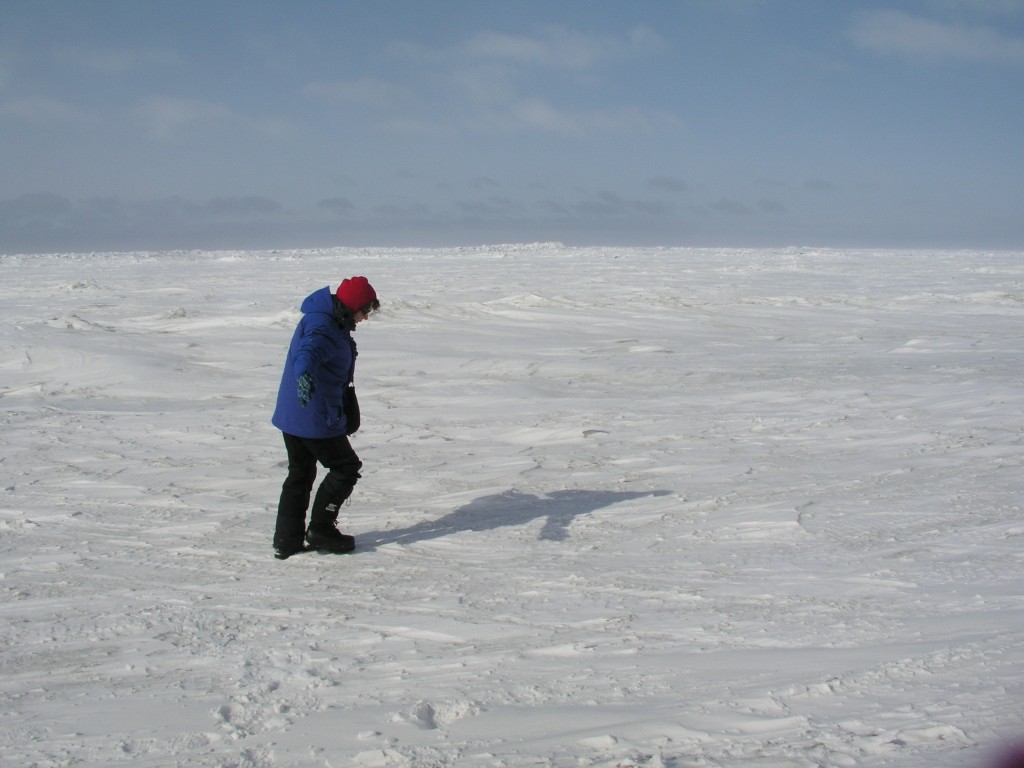
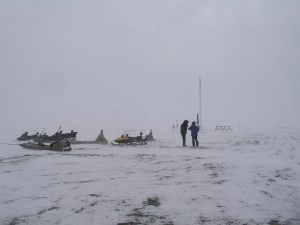
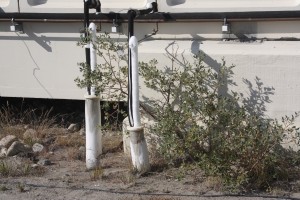

















Feedback